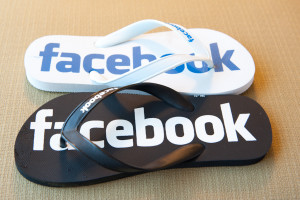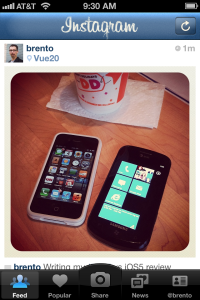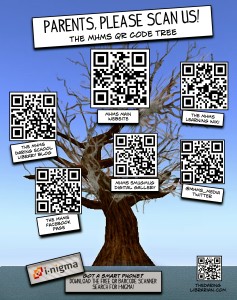October 14th, 2024 by Admin
Marketing is an essential element for your business’ success, and we are here to give some simple tips to help you market beyond flyers and brochures.
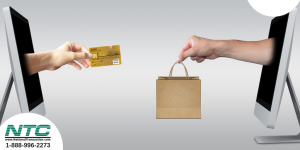
Create a Promotion or Discount Offer: If you are starting up or your business has slowed down, creating an offer or promotion can bring in some new business to you. Be sure is an offer that truly brings value to your customers and something that does not entirely undervalue your services either.
Creating a promotion or discount offer can help those who are undecided, to make a decision and try-out your services so they can see and test what you have to bring to the table.

Attend Networking Events: We all know this, but not many do it. People are needed for business, so what a better way to get customers than to attend a networking event.
Better yet, a networking event can bring a plethora of ideas. By only talking to others about what they do and who they are, you can realize how you can best serve your audience and also create long-lasting relationships.

Write Guest Posts: Chances are, that if you are in business, you have a certain amount of experience in some topic. What a better way to show your knowledge than to write about it!
While you can start your blog (which we recommend), you can also add value by going to other, perhaps more popular blogs and share your expertise there. Medium is an excellent site for this, and there are plenty of other blogs out there that are looking for people like you to share their two cents and bring value to their audience.

Host a Training: Following on sharing your expertise, what a better way than to host a training about what you do! Sharing some expert tips and giving others the power to do what you do can bring clients to you.
Sharing your expertise can give people an idea and sense of how passionate you are about what you do and how well you know your subject. By doing this, many can realize that instead of a do-it-yourself approach, it is best they hire your services. At a minimum, hosting training will bring in value to those around which can help with word of mouth.
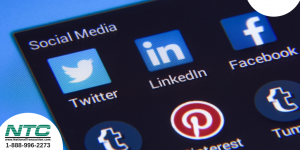
Use Social Media: Lastly, but not any less important, social media is a big way to market yourself. All of these topics above can benefit and be used as part of your social media campaign.
You can connect with your audience faster and constantly with social media. You can use to promote your blogs, your training, your promotions and even to continue to communicate with those whom you have connected at a networking event.
The best part about social media is that you can get a quicker response about how you are sharing your message and if people find value in it. It can also help you learn about your audience and how that audience reacts to you.
There are many more ways to market your business, but we think these five can give you a great head start and help you grow your business today. We would love to hear from you about how these have helped your business succeed.
Posted in Small Business Improvement Tagged with: blog, blogger, blogging, business, entreprenreur, expert, Facebook, facebook ads, Instagram, marketing, networking, promotion, social media, social networking, training
November 1st, 2018 by Admin
We are officially 55 days until Christmas, time to take all of the tricks out of your hat to promote your business. Since we know you will be using social media, here are 30 random holidays you can use to promote your business with their Hashtag.

November 1st:
#ExtraMileDay: Show your customers how you will go the extra mile for them.
November 2nd
#LoveYourLawyerDay: Need we say more? This one is perfect for lawyers or anyone working with them.
#FountainPenDay: If you sell promotional items, this one is for you. It can also work if you want to post the latest contract signed.
#SandwichDay: Even if you don’t own a sandwich shop, Sandwich day can be used to share a more laid back look of your company. Maybe sharing a picture of your last company picnic or lunch will do. Remember to have a good looking picture!
First Sunday of November
#ZeroTaskingDay If you work for a spa or anything that promotes relaxation, this one would be a good one for you!
November 5th
#LoveYourRedHairDay Hairdressers, time to get those finished looks and share them on social media!
#NachosDay Any day is a good day for Nachos, but on Nachos day you can show some humor as a way to connect to your customers. This one is great for restaurants.
November 8th
Guinness World Record Day: #GWRDay: Sharing a fun fact comes a long way in Social Media. Sharing a Guinness World Record that might relate to your industry can attract a new crowd online.
#CappuccinoDay: People love coffee, (search #CoffeeLover, and you’ll see) so why not share Cappuccino Day with your coffee loving crowd. Perfect for the coffee shop owner to the savvy consultant on the go.
November 10th
#SesameStreetDay: If you are in an industry that deals with children, this one is for you. Make the posts funny or just cute but remember you are targeting the parents at the end. Nostalgic posts work well too with this.
#VanillaCupcakeDay: Cupcake lovers beware, this hashtag might be for you. Perfect for the bakery owner and the all-time cupcake lover, there is no need to be a pastry chef to use this one.
November 11th
#origamiday This one might require some skill and imagination, but it can delight your online community and attract them more to what you do. If you use this one, be sure to send us a picture.
#SundaeDay Who doesn’t love Ice Cream Sundaes!
November 12th
#HappyHourDay Geared more for restaurants and bars, but with a bit of creativity, many can use this hashtag.

November 13th
#KindnessDay Show your kindness to others.
November 15th
#AmericaRecyclesDay We all need to take care for our planet. Show your support by sharing this with some facts and information about recycling.
November 18th
#PrincessDay: Pamper the princesses in your business or show appreciation of your customer.
#MickeyMouseDay Need we say more?
November 19th
International Men’s Day #MensDay: Men’s day is great to share information about current men’s health issues. Perfect for those in the healthcare industry
#PlayMonopolyDay: This one we feel is perfect for finance. “Don’t get caught in monopoly games and get your money safe” what do you think?
November 20th
#EntrepreneursDay Completely self-explanatory.
#NameYourPCDay Give some love to those PC users in your industry and have fun too.

November 21st
#HelloDay A great hashtag to introduce yourself and the team.
November 22nd
#GoForARideDay Whether it is a ride on a car or bike ride, many can use this hashtag if you are creative enough.
November 23rd
#FlossingDay perfect for those in the dental industry.
#EspressoDay Just like #CapuccinoDay, this hashtag can help greatly any account.
November 25th
#ShoppingReminderDay If you sell goods, this one is for you.
November 30th
#ComputerSecurityDay Technology always changes, this one can be an excellent reminder to keep online info safe.
All Month Long:
#PeanutButterLoversMonth When you ran out of ideas or inspiration this month, this hashtag can be a lifesaver. Remember that social media should entertain or educate and this one can help with that.
Bonus Holidays:
These might not be random but are always useful to add.
#Movember
#ThanksGiving
#CyberMonday
We hope these hashtags can help boost your business online presence and bring a little more creativity to your social media game. As always, have fun and use your to see if any of these can help your business.
Posted in Small Business Improvement Tagged with: account, business, capuccino, christmass, coffee, consumers, credit card, customer, customers, data, disney, e-commerce, Facebook, finance, fun, hairdressers, hashtags, holidays, Instagram, lawyers, merchants, payments, photography, restautrant, retail, Security, social media, transactions, twiter

September 18th, 2018 by Admin
Starting a business can be tough. It requires time, effort and passion like no other. It requires you to have tough skin and not allow the small things to bother you.
Although all of these qualities can be good, you still need to start and you need money, right? Not necessarily. Starting a business doesn’t always require you have a big amount of money or a business loan. There is some business that requires little to absolutely no money to start. And to be honest, with a little of resourcefulness, you can make your business big while spending less.

Here are 3 simple businesses to start with no money:
- Start an online business: With the age of social media and the internet, starting a business online it can be as simple as 123. You can sell T-shirts on places like Zazzle or Cafepress (to name a few) and get your own designs going. If you have a passion for graphic design or just have really cool sayings and ideas, this is a sure way to get started and only requires you to open up an account, upload designs, and spread the word.
- Sell your things: Making money doesn’t have to be complicated. You might have things laying around that you no longer need or you know you will never use. You can simply turn to places like Facebook Marketplace, eBay or any online marketplace platform to sell up your used or gently used goods. Want to make it a bigger business? Check out garage sales, pick up free stuff (also being offered online) and get going. No money required.
- Sell up your skills: Blogging, writing, or just really good computer skills? Become a professional writer or Virtual Assistant and get paid to use up those skills! You can promote yourself online in places like Fiverr, UpWork, Craigslist and even Facebook Groups (Just be sure to follow the group’s guidelines on this!) Some of this are 100% free to promote and get work while others charge you a minimal fee after you get your first gig.

Remember that being an entrepreneur is already making you be part of the different, the risk takers and the creative. So don’t play down your skills. You can start for free and grow from there. Even migrate to other passions of yours that can be turned to business.
Posted in Small Business Improvement Tagged with: blog, blogging, business, business tips, cafe press, craigslist, ebay, entrepreneur, Facebook, fiverr, freelancer, online business, social media, start a business, start-up, t-shirt, t-shirt printing, tips, upwork, virtual assistant, work from home, writing, zazzle
September 11th, 2014 by Elma Jane
Online retailers are finding the bricks-and-clicks strategy to be an effective way to serve and engage shoppers. Perhaps that is why an increasing number of ecommerce merchants are setting up shop offline. It’s important to note, however, that a bricks-and-clicks business isn’t just about having a physical store and an ecommerce site. For this model to be effective, each channel must complement and add value to the other.
Guidelines to execute a bricks-and-clicks strategy:
Allow Access to Online Account Information in Physical Store
Bridge the gap between bricks and clicks by giving your customers and physical-store staff access to online account information. Doing so can enhance shopping experiences and drive sales.
Integrate Online and Offline Inventory, Fulfillment
Offer click-and-collect services that allow shoppers to buy merchandise online and pick it up at a local retail branch or service station. Many consumers would rather forgo the shipping costs and wait time and instead pick up their items at a time and place that’s convenient for them. Also, use your brick-and-mortar inventory when an item is out of stock online.
Use Online Data for Offline Selling, and Vice Versa
Data pertaining to online sales and traffic won’t just help you optimize your ecommerce site. It can also apply to offline decisions. For instance, if you see an increase in sales for a particular product on your website, you should consider promoting it offline, as well, to your brick-and-mortar shoppers.
Also pay attention to social media data such as Facebook likes and Pinterest pins. What’s trending on social sites can help with merchandising and marketing. Consider something similar in your brick-and-mortar business. Take note of the most liked, viewed, and pinned items online and then leverage that information when making decisions regarding product displays, inventory and more.
You can also use offline information to enhance your ecommerce site. Utilize in-store analytics tools, such as people counters and sensors, to better understand how your offline customers behave and then compare that with online behavioral data to spot patterns and opportunities.
Qualitative information, such as shoppers’ common questions and concerns, can also be used to improve your online shop. For instance, if your physical store associates keep getting the same questions about a particular product, there’s a good chance that online shoppers have similar queries. So you may want to include the answer in that item’s product description page.
Use Smartphone Beacons in Physical Stores
Beacons are Bluetooth-enabled devices that let brick-and-mortar merchants send customized offers and recommendations to their shoppers via their smartphones based on where the shoppers are in the store. For example, if a shopper is in the footwear department, the retailer can use its store beacons to send the shopper a coupon for shoes. Bricks-and-clicks businesses can also use the technology to send tailored offers to shoppers based on their online behavior.
Posted in Best Practices for Merchants Tagged with: account, Beacons, bluetooth, brick and mortar, business, consumers, coupon, customers, data, devices, ecommerce, Facebook, inventory, marketing, merchandising, Merchant's, Online Account Information, Online Data, pinterest, product, sales, shoppers, site, smartphone, social sites, store, website
August 18th, 2014 by Elma Jane
As a small business, you may have ignored Facebook, but it turns out that by not having a presence on Facebook, you could be missing out on a huge business opportunity. The social networking site has a huge influence on what products and services people buy. More specifically, Facebook significantly influences millennial shoppers’ opinions of small businesses, including their decisions to purchase items not just online, but in-store as well. Nearly 60 percent of consumers ages 18 to 29 engage with Facebook ads at least once per week before buying an item in-store from a small business. Additionally, 62 percent believe Facebook is the most useful social media outlet for researching small businesses before visiting a store in person. That’s considerably higher than the 11 percent who feel the same about Twitter and the 12 percent who believe Pinterest is the best site for researching small businesses. Overall, 59 percent of millennial consumers visit the Facebook pages of small businesses at least once a week. To succeed both online and offline small businesses must first understand consumers’ online-to-offline shopping behaviors and invest at least a portion of their digital marketing dollars into the right technology and tools to create precisely targeted, relevant and personalized experiences.
The true value of Facebook, doesn’t lie in simply driving likes and adding new fans. It lies in using personalized content to convert digital hunters into loyal, repeat in-store buyers. The study discovered that by increasing the deals they offer on Facebook, businesses have the potential to make an immediate impact on their bottom line. Nearly 85 percent of the shoppers surveyed said local deals and offers on Facebook are important in their decision to purchase an item in-store. Forty percent of those surveyed said they think Facebook offers that can be redeemed in local stores are most likely to influence their decision to visit the website of a small business. With so many consumers constantly turning to Facebook when making purchasing decisions, business owners especially those in the restaurant, spa/beauty and education industries need to come to terms with the fact that Facebook is a highly important marketing tool that needs to be actively attended to and not just something they check in on every now and then.
Posted in Best Practices for Merchants, Small Business Improvement Tagged with: consumers, digital marketing, Facebook, marketing, marketing tool, millennial consumers, networking, pinterest, products, purchasing, services, shoppers, social media, social networking, twitter, website
August 7th, 2014 by Elma Jane
Using Transfer by Facebook, the user can transfer money after logging into their Rakuten Bank account from the Rakuten Bank app, selecting the person they wish to send money to from their list of Facebook friends in the app, and inputting the amount they wish to transfer.The fee-free transfer process can be completed on the app without any of the recipient’s account information and include a 50 character message to accompany the transaction. Money can also be transferred to non-Rakuten Bank account holders, for a fee of Y165. By accessing a URL on Facebook with the transfer notice, the recipient is able to specify a bank account for the money and complete the deposit.
Posted in Financial Services Tagged with: account holders, account information, app, bank account, Bank app, deposit, Facebook, free transfer process, transaction, transfer notice, URL
August 4th, 2014 by Elma Jane
Run through a non-profit organisation, Stellar is a decentralized protocol for sending and receiving money in any pair of currencies, be they dollar, yen or bitcoin. The system works through the concept of gateways that let people get in and out of the network. Users hold a balance with a gateway, which is any network participant that they trust to accept a deposit in exchange for credit on the network. To cash out, a user invokes the promise represented by a gateway’s credits, returning them in exchange for the corresponding currency.
Like Ripple, Stellar comes with its own built-in digital currency, which will be given away for free to people who sign up via Facebook, to nonprofits and to current bitcoin and Ripple holders. Initially there will be 100 billion ‘stellars’ (five per cent of which will be kept back to fund the nonprofit) with the supply increasing at one per cent a year. Although stellars will have a market-determined value, their main purpose will be to provide a conversion path between other currencies. This means that when two parties exchange money through the distributed exchange, stellars sit in the middle. Example, a user might submit a transaction which converts EUR credits to stellar and then converts those stellar to AUD credits. Ultimately, the user will have sent EUR, the recipient will have received AUD, and two exchange orders will have been fulfilled.
Developers are being invited to jump in and work with the open-source code and build applications on top of Stellar. The project has secured the backing of payment industry darling Stripe, which has handed over $3 million in exchange for two per cent of stellars. Stellar is highly experimental, but it’s important to invest effort in basic infrastructure when the opportunity arises. Stellar could become a much better substrate for a lot of the world’s financial systems.
Posted in Internet Payment Gateway Tagged with: AUD credits, bitcoin, code, credit, credits, currencies, deposit, digital currency, EUR credits, Facebook, gateways, network, payment industry, transaction
July 24th, 2014 by Elma Jane
You may only think of Instagram as a place to edit and share snapshots of your fancy vegan lunch or your adorable new kitten, but the photo-sharing app can be highly useful when it comes to building your business’s brand. Social media not only Instagram, is an incredible platform for people to use to drive more interest to their business. When it comes to building up your following, having good content is the most important factor. While paid traffic is a useful way to gain traction and drive more interest to your pages, she said that at the end of the day, word-of-mouth is the most beneficial.If you want to have more people inviting their friends to your page, you have to have something that’s worth sharing or talking about. Since content is king on social media, businesses looking to market on Instagram in particular should make sure that their posts are relevant and eye-catching with high-quality photos and videos. Most important tip for Instagram success however, isn’t about what hash tags or filters and photo effects to use. It’s even more straightforward: Social media is just like the rest of your life relationships. People want you to be real, honest and address issues we all have on a day-to-day basis. Instagram is a fairly simple social network to use, because unlike other social networks such as Facebook, Tumblr and Twitter, where text is the focus and no form of multimedia is off-limits, you’re limited to only posting photos or videos (15 seconds or less) with captions. For this reason, maintaining an active Instagram presence may seem almost effortless. However, Insta-fame doesn’t come without issues. The biggest challenge would be trying to help everyone. Obviously, the more interest and followers you gain, the more unique problems and questions you receive. For businesses looking to grow their Instagram pages, just remember. It’s all about quality. Great content, honesty and a personable, likable brand voice are all you really need for Insta-success.
Posted in Uncategorized Tagged with: Facebook, Instagram, multimedia, platform, social media, social network, Tumblr, twitter
June 12th, 2014 by Elma Jane
QR: The Bridge to the Modern World
Involvement devices have come a long way from the time of Clearinghouse mailings, where you would peel off a label and stick it onto another page before dropping it back in the mail.
Today, print’s best involvement device is the QR code. It works as a portal or bridge into the mobile online world where the cataloger’s brand lives and breathes in real time. Even better, it can lead the customer from the catalog page to the checkout button on their smartphone within minutes.
The printed catalog delivers rich colors and a personal, tactile experience still not attainable through any mobile device. In many ways, though, it is a vestige of a bygone era, and an expensive one at that. Catalogers know this. Even the U.S. Postal Service also knows this. That’s why the USPS is running a postage discount promotion for the second year in a row this summer to encourage the use of QR codes by direct mailers.
Let’s take a quick look at the way a few catalogers are using QR codes.
Anthropologie
Anthropologie’s marketing strategy is more about selling a lifestyle than selling products. That explains why making it easy for customers to move toward actually buying something doesn’t seem like such a big priority in their catalog. They did not include a QR code anywhere. The closest they came was one line next to the address: For store information, go to www.anthropologie.com. Their 800 number, they do take phone orders is printed only once in tiny type, so having no QR code seems to fit in with their attempts to play hard to get. Marketing critique aside, by not using a QR code on their catalog, they are missing the opportunity to draw customers into closer involvement with their brand, whether or not they intend to make an immediate sale.
Best Practices
With these few examples in mind, it’s time to look at best practices for using QR codes in catalogs, which can be a two-sided equation. There is the technical aspect and the branding/selling aspect. As far as the technical side goes, customers need to use their smartphone to scan the code successfully, and the destination on the other end must be optimized for mobile access. Sometimes the hardest part is organizing the resources required to execute the backend side of things, especially if the goal is to make an immediate sale.
The main thing to consider is that QR codes work as a bridge and that bridge is a smartphone, iPad, or some other tablet with all their usual constraints (screen size, internet connection, quality of camera, QR reader app, user proficiency, etc.). Also, don’t assume that everyone has a QR reader or even knows what a QR code is. Especially in catalogs, where customers have been seeing postal service barcodes for years, people may assume that the pixelated square thing is just something else for the USPS to lose money on. Instead, including a brief call to action to scan the QR code should do the trick.
Crossing the Bridge
Getting customers to scan the QR code is only half the battle. Now you need to make sure they feel it was worth their while to scan. It’s all about the next steps in your customer relationship. If you have an Apple or Android app, then that’s where to send people if you know that you can convert sales successfully on mobile devices. Sending them to your Facebook fan page is an option too, but not a big win if a majority of your customers are already fans.
Special promotions, optimized for mobile access, will certainly earn your QR its keep. If your goal is to inspire a trip to one of your stores, then do what Brookstone does and send customers to a Google map with all store locations within a hundred miles. It’s also possible to send scanners to a dedicated page, again, optimized for mobile where you give them a number of options: Facebook, shop, app, etc.
Delia’s
By appealing to fashion-hungry American teens via retail stores, web, and catalog, Delia’s sold over $220 million in 2011. In the single catalog we looked at, Delia’s had a QR code on its back cover. When scanned, the code points to Delia’s Facebook page. That’s certainly one way to build involvement with the Delia’s brand, but it may not be the best. Delia’s has an Apple app with full e-commerce capabilities, so Delia’s could be missing out on the opportunity to help the customer cut to the chase and get straight to their virtual shopping bag. Still, at least they’re using the code.
King Schools
Unless you’re a pilot in training or know one fairly well, you have probably never heard of King Schools. They offer more than 90 flight training courses, plus all sorts of accessories for pilots-in-training. They have no retail stores, but that’s all the more reason to mention them here, retailers can learn a lot from King Schools about how to use QR codes in their catalogs.
In the one catalog, King used a QR code on the front cover and the back cover. Now, the iPad shows enormous potential for use in general and commercial aviation, so King is smart to use their QR codes to point customers directly toward their mobile apps and offerings. In fact, King Schools uses QR codes on the Take Courses on Your iPad landing page itself.
In most cases it seems counterintuitive to display a QR code on a website for people to scan. After all, they’re already there. It’s a smart use of codes in this case, for two reasons. First, the codes lead the customer directly to the Apple app store, so it actually makes sense to scan the codes even though the customer is already on their website. The customer is now just a few clicks away from buying and installing the app. Second, there is one QR code for their app store in general, and then there are unique codes for individual apps.
Technicalities
The content in a QR code tops out at 4,296 alphanumeric characters, but catalogers only need a fraction of that to get the customer to where they want them. However, even when the character count is down to a few dozen, size does matter, because QR codes with more data embedded in them are more complex visually. This means that even smartphones with the latest and greatest optics will have trouble reading densely populated codes. Make sure the QR code is big enough. Even the simplest codes will frustrate the scanning process if they are too small or if there isn’t enough white space around them. Maybe a QR code isn’t the most photogenic thing in the world, so it’s a good challenge for catalog art directors to incorporate it into the design without shrinking it into oblivion.
More sophisticated catalogers will want to use personalized QR codes. Today, even local printers are likely to have the means to print unique QR codes for each recipient in a mailing. This creates the ability to track scans back to the individual, a marketer’s dream when it comes to one-to-one marketing relationships.
Innovation can get you traction within the social media realm and that’s money in the bank. Whether you’re a major catalog player or using QR for something completely different, always consider getting the marketing and PR people involved to leverage any novelty aspects of the application.
The benefits pile up quickly to those catalogers who take the time to get smart about QR codes. Thick catalog books can be thinned down a bit if QR codes succeed in pulling customers from the page and onto their site or apps, cutting postal costs for the millions of mailings every year. And, even if the cataloger doesn’t go to the extreme of printing unique QR codes, the branding value of offering that connection from the old-style printed piece to the dynamic world of interactive mobile technology makes it well worth the effort.
The ink needed to print a QR code on a major retailer’s catalog might weigh only a fraction of an ounce, but when used right, it’s worth its weight in gold. Too bad the majority of catalogs seem to be squandering the opportunity by underutilizing the code or worse, not including any at all. In a world where an integrated multi-channel approach is a must-have for any retailer to survive, the stakes of leveraging every opportunity for interaction are higher than ever.
Posted in Best Practices for Merchants, Smartphone Tagged with: Android app, Anthropologie, app, Apple, bank, barcodes, Best Practices, Brookstone, clearinghouse, code, commercial aviation, Crossing the Bridge, customer relationship, data, data embedded, Delia’s, e-commerce, Facebook, google, Google map, interactive mobile technology, ipad, King Schools, marketing, mobile, mobile access, mobile device, mobile online, mobile technology, multi-channel, phone, portal, Postal Service, QR code, QR reader, retail stores, scan, scanners, smartphone, social media, tablet, USPS, virtual shopping, web, website
June 6th, 2014 by Elma Jane
In business, Your website is often the first place consumers will go to find you. Your site is your chance to make a good first impression on potential leads and bring back existing customers, it’s important to make sure your website keeps its visitors interested and engaged.
Most brands are aware of the need to create an engaging Web presence, but smaller ones typically don’t think they have the time or resources to create a website at all. A trend among smaller business is to create just a Facebook page with no website. This is a great place to start, but to gain “customer trust”, having a website is important. It shows you’re an established company. A company’s website can be its “number 1” driver of business with the right tools and strategies. Building a great website doesn’t have to be expensive or time-consuming.
Optimize your Web presence for maximum customer engagement
Make your website experience match your customer-service experience.Consumers have come to expect the same type of experience with a brand online as they would in-store, enabling features on your website that allow visitors to complete as many interactions as possible for a seamless customer-service experience. These features can include detailed descriptions of each of your products and services, easy-to-access contact and purchase information, and a way for customers to reach you quickly, such as a live-chat function or links to your social media pages.
Personalize your website in ways that make sense for your business.Enhance customers’ experience on your website by customizing it to their needs. Use personalization tactics that make sense for you. Big Data analytics and voluntary surveys can help you send customized offers based on consumers’ past shopping habits and preferred contact methods which can help with sales conversions.
Use social media as a communication tool.The role of social media for businesses has evolved considerably. A way to share and promote content on your website, social media can and should be used as an extension of your customer service. Your website should be the focal point for your brand’s information. If you can get beyond that, social media should be a way to reach out to clients in a cost-effective way. By using Facebook, Twitter and other sites as a line of communication between your brand and your customers, you can drive them to your website in unique ways, such as by sharing a blog post that will help answer a customer’s question.
Posted in Small Business Improvement Tagged with: big data, Big Data analytics, blog, communication tool, consumers, customer service, customers, Data analytics, Facebook, leads, live-chat, products and services, resources, sales conversions, social media, tool, tools, twitter, website











